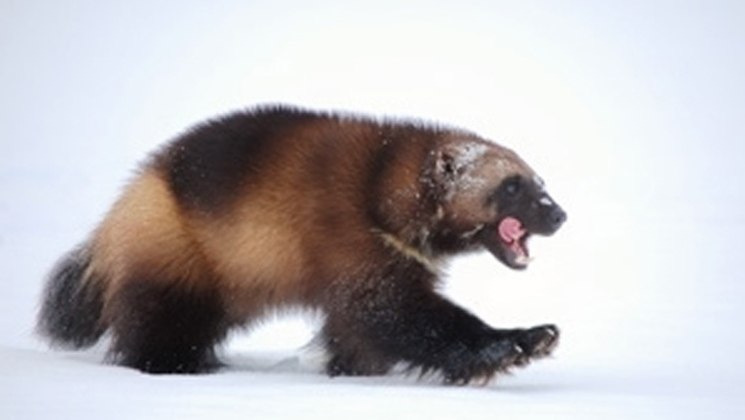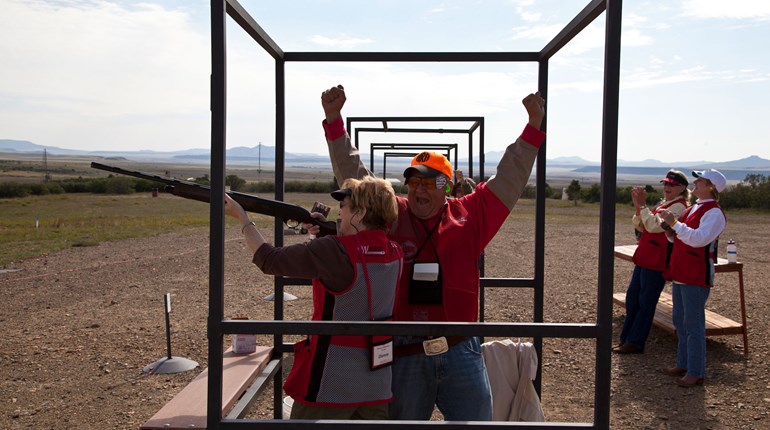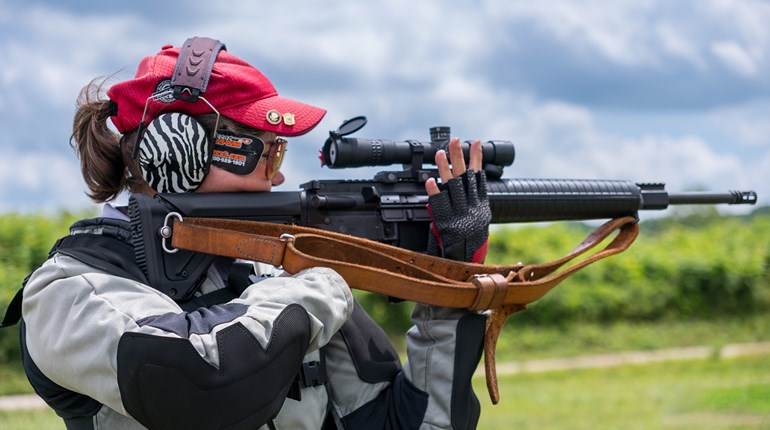
Thanks to the widespread success of a certain comic-book superhero, most Americans are very familiar with the wolverine...in concept, at least. What a lot of people don't know is that no matter how many pixels and ink went into creating those comic books, the actual Arctic land mammal is almost as formidable as any work of fiction. So, for this Fun Friday, get your adamantium claws out and dig in to five things you didn't know about wolverines.
1. The wolverine may look an awful lot like a small bear, and its name makes it sound like it might be related to the wolf, but it's actually the largest land-based member of the weasel family (mustelidae). Like all mustelids, the wolverine punches way, way above its weight class. Wolverines have been known to drive mountain lions and grizzly bears—fierce predators several times the wolverine's size—off of their own kills. Speaking of predation, although wolverines generally only weigh between 25 and 40 pounds, they're quite effective predators. They'll target just about anything, from mice to moose. Yes, you read that right: Moose. Animals the size of your average minivan. Wolverines are additionally among the few animals willing to take on porcupines as prey. It's not that wolverines are immune to the quills of a porcupine; they aren't. They simply don't care.
2. While we're on the subject of things that wolverines like to eat, we would be remiss not to mention bones. Whether the wolverine is chowing down on a meal it stole from an apex predator 10 times its size or is merely tucking into a creature 30 times its size that it killed itself, wolverines are the epitome of "waste not, want not." They will eat every part of the carcass, including its bones. We don't mean cracking them open to get at the marrow, as many predators do; we mean actually eating them. Wolverines have even been known to consume their prey's teeth.
3. How does the wolverine do this? Well, it's important to remember that the wolverine is adapted to its native habitat, the pine forests of the Western mountains and the northern tundra. As such, they frequently must eat meat that has frozen solid, so they have special molar teeth at the backs of their jaws that are rotated 90 degrees. This allows them to tear up frozen chunks of meat. It's also supposed that wolverines have tremendous bite strength, although they never make any of the top-10 lists of animals with the most powerful bites. That's not because the wolverine doesn't have a powerful bite; it clearly does. That's because nobody has measured it. (Hey, do you blame the scientists? I wouldn't want to, either.)
4. Wolverines are solitary animals, with huge territories—up to 240 square miles. This is just as well, because wolverines make lousy roommates. First, they produce a particularly nasty-smelling yellow exudate from their anal glands, which they use to mark their territory and also, sometimes, just because. People who live in extreme Northern climes report that wolverines seem to love breaking into cabins and just wandering out with whatever items strike their fancy.
5. Although they do not possess unlimited healing ability and their claws, though long and quite sharp, are made of the same keratin as any other animal's, wolverines do have some pretty good superpowers. Wolverine fur does not hold moisture, which makes it frost-proof in cold weather. (For this reason, Native Americans valued it as a trim for the hoods and cuffs of coats.) Additionally, wolverines have broad, furry paws that function like snowshoes, allowing them to truck along at a very respectable 30 miles an hour, even in the snow.







































